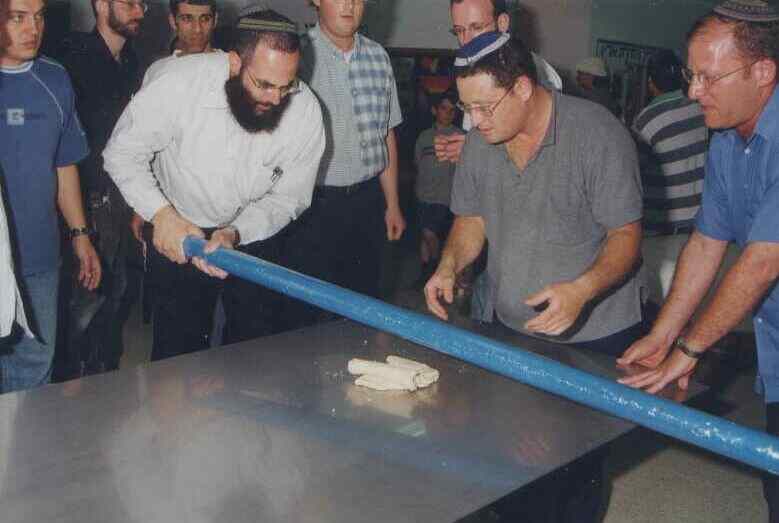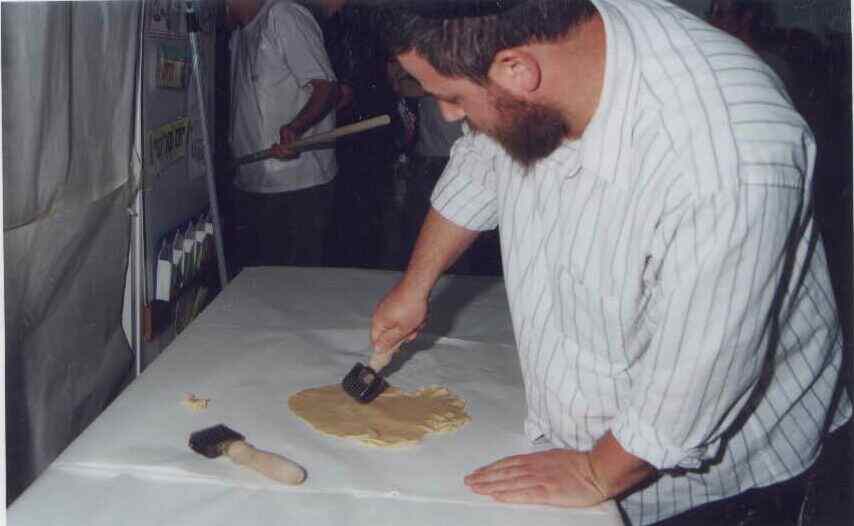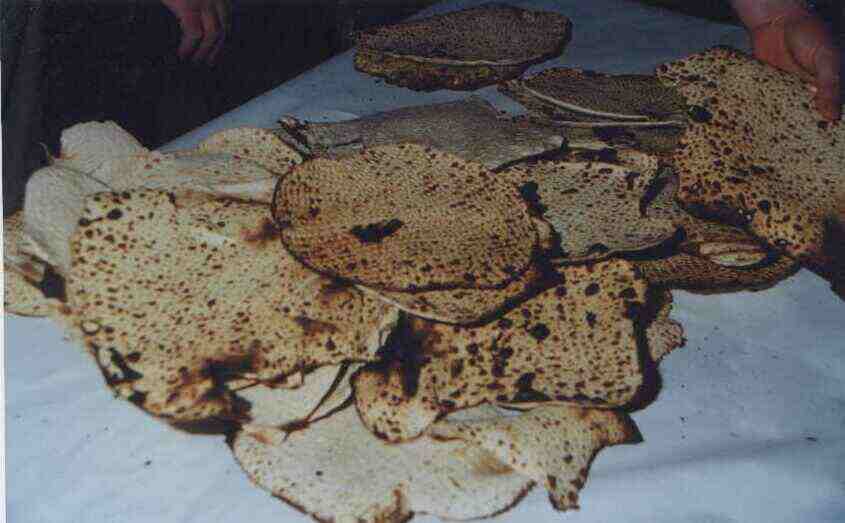-
Shmone Esrei-tefila l
kashrut l
tevilat keilim l
brachot l
lashon hara l
matza guide
STEP BY STEP MATZA BAKING
|
|
Yosef Shmaryahu Dissin z"l a leading member of our matza chabura who passed away with while involved in baking matzot mitzva Talmon, 6 Nissan 5761
|
| The following step by step outline, describes the general principles involved in preparing hand baked matza. It is by no means a complete or authoritative source for studying the fine details of the law. The dinim (laws) of baking matza are complex and supervision by a knowledgeable orthodox rabbi is an essential ingredient for producing kosher matza. |
|
Natural spring water Sifting the flour Pouring the flour in the mixing bowl, getting ready to start... Mixing the flour and water Pounding the dough (thinning) Dividing the dough among the rolling-pin crew Rolling the dough into shape Matzas are perforated Taking the matza to the oven Matza is placed is oven and removed when fully baked Matza is carefully checked by mashgiach Al achilat matza... |
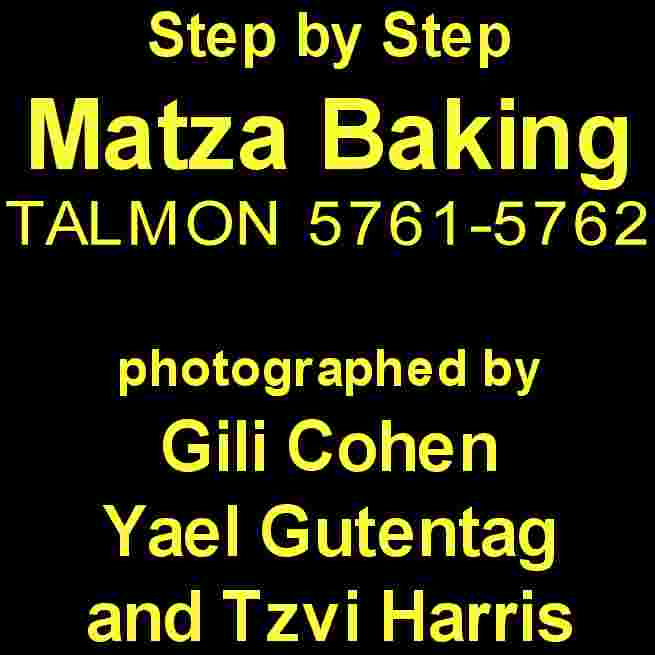 |
|
Water is prepared in advance for matza baking. The water is taken from a well, spring or resevoir, where nothing was added to the water. We took our water from a natural spring near Beit Choron (out on route 443 by the entrance to Givat HaAyalim, for those who are familiar with the area). Note: The water from this spring is no longer fit for drinking. The water is drawn into containers after sunset, but before darkness (bein hashmashot), then it must remain in a cool place overnight. The water can only be used 12 hours later, after it waited out the night in a cool place. This is known as "mayim shelanu". |

natural spring water
|
|
Special flour which is guarded from coming into contact with water is used when baking matzas. Preferably, the flour should be under supervision from the time it is harvested. (There are more lenient opinions which require the matza for Pesach to be supervised from the time it is taken to be ground). Today we refer to matzas made from this flour as "shmura matza". |
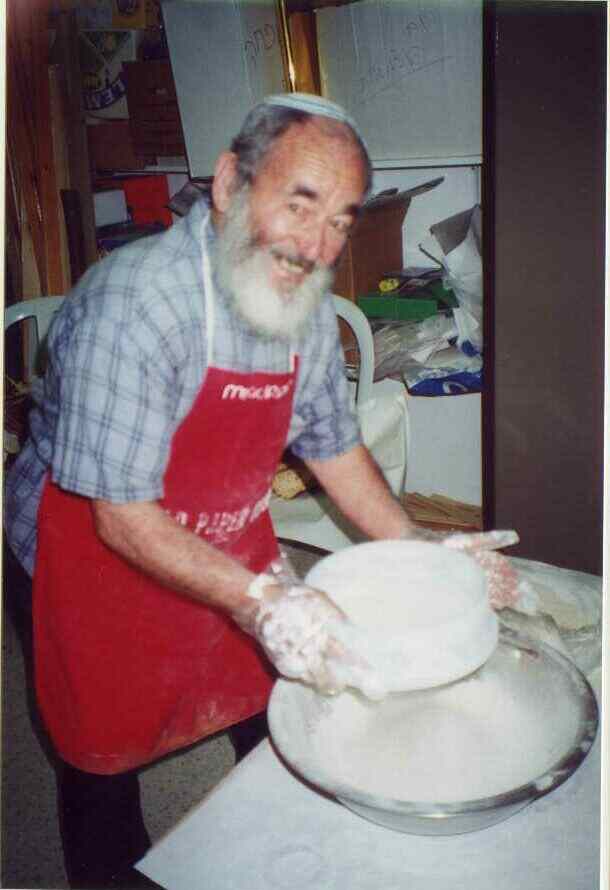
sifting the flour
|
We kept the flour in a special room, known as the "cheder kemach" - flour room.
The flour is weighed, and put in a clean plastic bag until it is needed. It's important not to mix too much flour and water, because during the preparation the dough can't be left alone. Someone should be working on it (whether it's mixing, kneading, rolling etc) at all times. If a large batch is prepared, part of the dough might sit untouched for a while because there aren't enough people to deal with the large batch.


